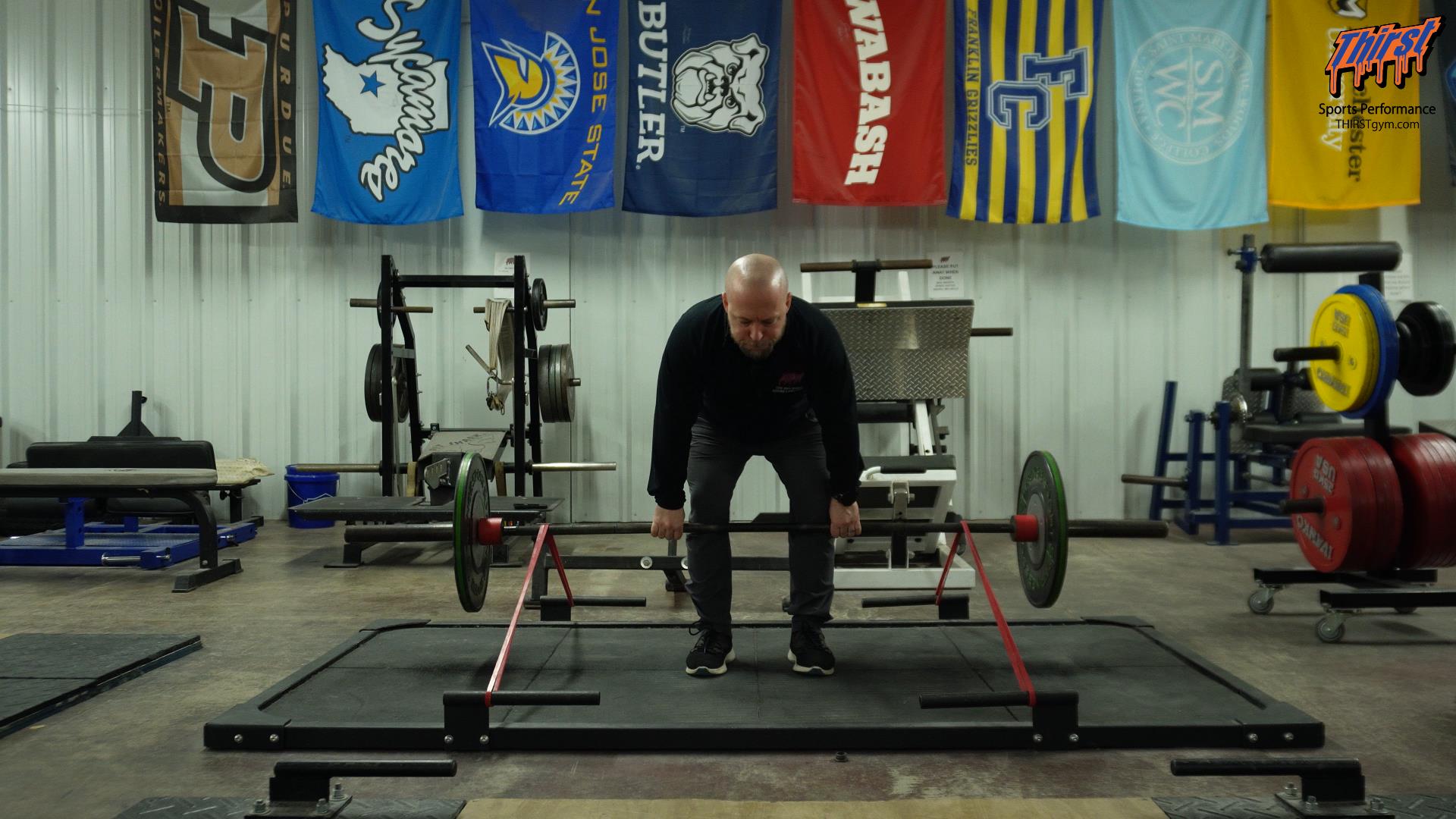Dimel Deadlift with Bands: A Powerful Tool for Explosive Strength Development
The Dimel deadlift with bands represents an advanced progression of the traditional Dimel deadlift, incorporating accommodating resistance to enhance rate of force development and hamstring recruitment. This variation transforms an already effective exercise into an even more potent tool for developing explosive power and athletic performance.
Watch the video below on how to maximize this exercise.
Understanding the Exercise Foundation
The Dimel deadlift, originally popularized in powerlifting circles, serves as the foundation for this banded variation. Before attempting the banded version, athletes should master the standard Dimel deadlift pattern, which essentially combines a Romanian deadlift (RDL) motion with an explosive hip drive. The addition of bands introduces a new dimension of difficulty and training stimulus.
Equipment Requirements and Setup
To perform this exercise effectively, you’ll need:
- A dedicated band platform setup (preferred over band attachment via steam pipes)
- Band pegs for secure attachment points
- A barbell with light loading
- Resistance bands providing 15-25% of your conventional deadlift max
The band platform setup is particularly crucial for this movement. While steam pipe setups can work, band pegs provide superior stability and safety, which becomes especially important given the explosive nature of this exercise.
Proper Exercise Execution
The movement pattern follows these key phases:
Initial Position:
- Adopt a conventional deadlift stance
- Perform a standard deadlift to bring the bar to the top position
- Ensure appropriate band tension (15-25% of your normal deadlift max)
Movement Sequence:
- Lower the bar in an RDL pattern to just below knee height
- Drive explosively through the hips to return to the starting position
- Focus on maintaining a strong hinge pattern throughout
- Repeat the movement with maximum explosive intent
Programming Guidelines
For optimal results, structure your training as follows:
- Sets: 2-3
- Repetitions: 15-20 per set
- Load: 15-20% of your deadlift max plus band tension
- Tempo: Explosive concentric, controlled eccentric
- Frequency: 1-2 times per week as part of a comprehensive training program
The Science Behind the Movement
The banded Dimel deadlift capitalizes on several key training principles:
Overspeed Eccentric Training: The bands create an accelerated eccentric phase, forcing your muscles to switch rapidly from lengthening to contracting. This enhances the stretch-shortening cycle and improves rate of force development.
Motor Unit Recruitment: The explosive nature of the movement, combined with band resistance, maximally recruits fast-twitch muscle fibers in the hamstrings and glutes. This recruitment pattern is particularly valuable for developing power and explosiveness.
Variable Resistance: The bands provide accommodating resistance, meaning the load increases as you approach the top of the movement. This matches the strength curve of the deadlift pattern, maximizing tension where you’re biomechanically strongest.
Athletic Performance Benefits
This exercise particularly benefits:
- Powerlifters seeking to improve deadlift power
- Athletes requiring explosive hip extension
- Sprinters and jumpers needing enhanced hamstring power
- Team sport athletes looking to improve acceleration and change of direction
Important Technical Considerations
Success with this exercise requires attention to several key factors:
Weight Selection: This is not a maximal strength exercise. The focus should be on explosive execution rather than heavy loading. A light weight allows for proper technique and maximum intent.
Band Tension: Start conservatively with band tension around 15% of your deadlift max. This can be progressively increased as technique and comfort improve.
Movement Quality: Despite the explosive nature, maintain proper positioning throughout. The hinge pattern should be crisp and controlled, even at high speeds.
The banded Dimel deadlift represents an advanced training tool that can significantly enhance your explosive strength development. When programmed appropriately, it serves as an excellent complement to a strength training program focused on power development and athletic performance. Remember to approach this exercise with proper progression and respect for technique, as the primary goal is to improve rate of force development rather than handle maximum loads.








